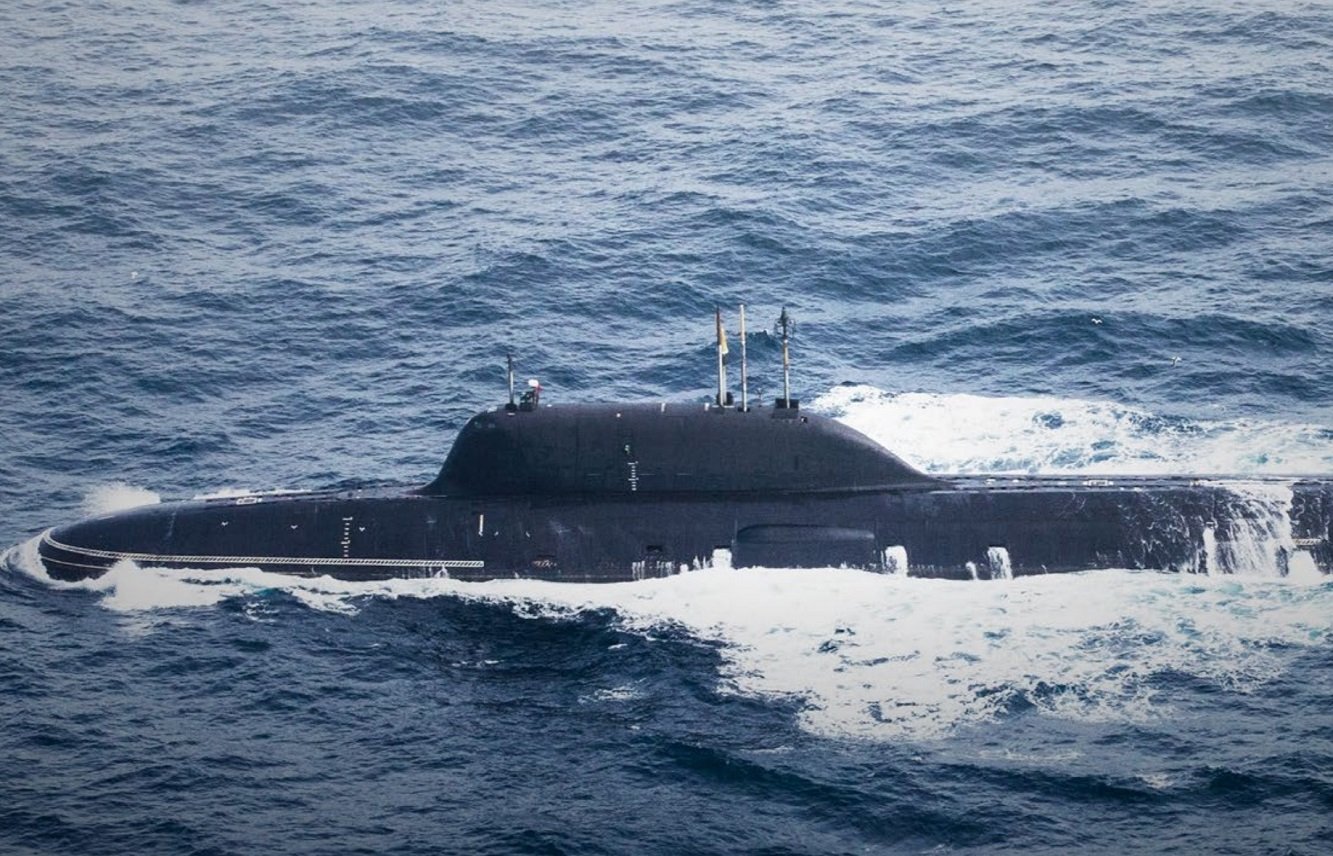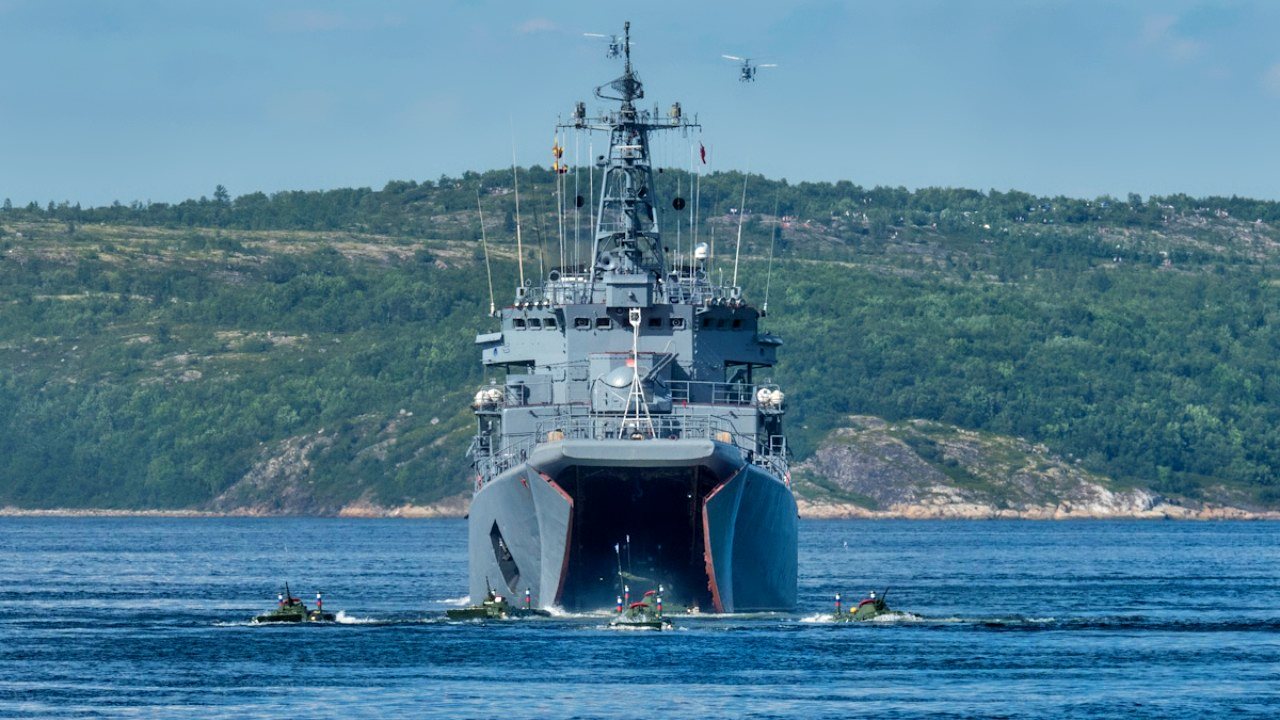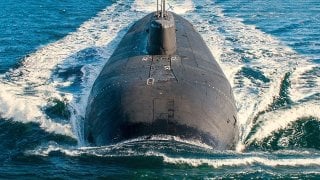Russian Warships and a Nuclear Missile Submarine are In America's Backyard
The missile frigate Admiral Gorshkov, accompanied by the nuclear-powered submarine Kazan and other support ships, has been monitored by the U.S. Navy and Coast Guard as they transit the Atlantic.
Summary and Key Points: The missile frigate Admiral Gorshkov, accompanied by the nuclear-powered submarine Kazan and other support ships, has been monitored by the U.S. Navy and Coast Guard as they transit the Atlantic.

-Despite their formidable armament, including hypersonic cruise missiles, there is no indication of nuclear warheads onboard.
-This deployment is seen as a reminder of Russia's naval capabilities amidst the ongoing conflict in Ukraine, though it poses no direct threat to the U.S.
U.S. Monitors Russian Naval Activity Near Florida Keys
It was almost 60 years ago that the Cold War comedy "The Russians Are Coming, the Russians Are Coming" hit theaters. The film, which was nominated for numerous awards including an Oscar for Best Picture, jokingly highlighted the type of hysteria common in the era. Similar panic is being seen again this week as several Russian Navy warships are set to begin exercises near Cuba later this month.
Russian state media, citing the Russian Ministry of Defense, reported on Tuesday that the missile frigate Admiral Gorshkov took part in air attack drills in the Atlantic Ocean, before resuming its planned deployment to the Caribbean. The surface warship is being accompanied by the Yasen-M-class nuclear-powered guided-missile submarine Kazan, the replenishment tank Academic Pashi, and a tug boat Nikolay Chiker. All are reported to be in service with the Russian Navy's Northern Fleet, and arrived in Havana on Wednesday morning.
The Russian warships had been spotted operating east of the Florida Keys on Tuesday and were being closely monitored by U.S. Navy guided-missile destroyers USS Truxtun (DDG-103), USS Donald Cook (DDG-75), and USS Delbert D. Black (DDG-119), the U.S. Coast Guard cutter USCGC Stone (WMSL-758), and more than a half-a-dozen P-8A Poseidon anti-submarine warfare (ASW) aircraft, USNI News first reported.

"In accordance with standard procedures, we've been actively monitoring the Russian ships as they transit the Atlantic Ocean within international waters," the U.S. Northern Command (NORTHCOM) said in a statement. "Air and maritime assets under U.S. Northern Command have conducted operations to ensure the defense of the United States and Canada. Russia's deployments are part of routine naval activity which poses no direct threat or concern to the United States."
Well-Armed Vessels – But No Need to Panic
Both Admiral Gorshkov and Kazan are well-armed, and each is equipped with the Tsirkon (Zircon) hypersonic nuclear-capable cruise missile. However, there is no indication that the vessels are carrying nuclear warheads – and the Cuban Foreign Ministry announced the vessels would not carry nuclear weapons during the visit to Havana, and announced the port call "does not represent a threat to the region," Newsweek reported.
Analysts have suggested this is the Kremlin's way to remind Washington that its navy is still a blue water force that can project power in the Atlantic even as the Russian military remains engaged in the conflict in Ukraine.
"Russia will conduct heightened naval and air activity near the United States. These actions will likely culminate in a global Russian naval exercise this fall. We are expecting that Russia will temporarily send combat naval vessels to the Caribbean region and these ships will likely conduct port calls in Cuba and possibly Venezuela," the U.S. Office of the Secretary of Defense said via a statement to the media. "There may also be some aircraft deployments or flights in the region. Russia’s deployments are part of routine naval activity and we are not concerned by Russia's deployments, which pose no direct threat to the United States."
The Russian warships won't be the only foreign military vessels arriving in Havana this week. According to the Tampa Bay Times, the Royal Canadian Navy patrol vessel HMCS Margaret Brooke will arrive on Friday for a planned visit.
Though the presence of Russian warships, including a submarine that analysts have touted as being one of the most capable in the world, in the waters close to the Florida coast may seem like a failure on the part of the U.S. military to contain Russia, the fact remains that the Russian flotilla operated much as the U.S. Navy does around the world. The goal of U.S. policy is to promote free and open sea lanes, and the U.S. military often sails its warships and flies its warplanes close to Chinese and Russian airspace.

Of course, the U.S. Navy typically deploys much more than a frigate joined by a tug and replenishment ship!
Likewise, many NATO nations deal with the near-constant presence of Russian warships/aircraft close to their waters. If anything, this week's deployment of a Russian frigate and submarine should serve as a reminder of the importance of NATO and the U.S. military's allies and partners around the globe.
Author Experience and Expertise: Peter Suciu
Peter Suciu is a Michigan-based writer. He has contributed to more than four dozen magazines, newspapers, and websites with over 3,200 published pieces over a twenty-year career in journalism. He regularly writes about military hardware, firearms history, cybersecurity, politics, and international affairs. Peter is also a Contributing Writer for Forbes and Clearance Jobs. You can follow him on Twitter: @PeterSuciu. You can email the author: [email protected].
All images are Creative Commons or Shutterstock.


